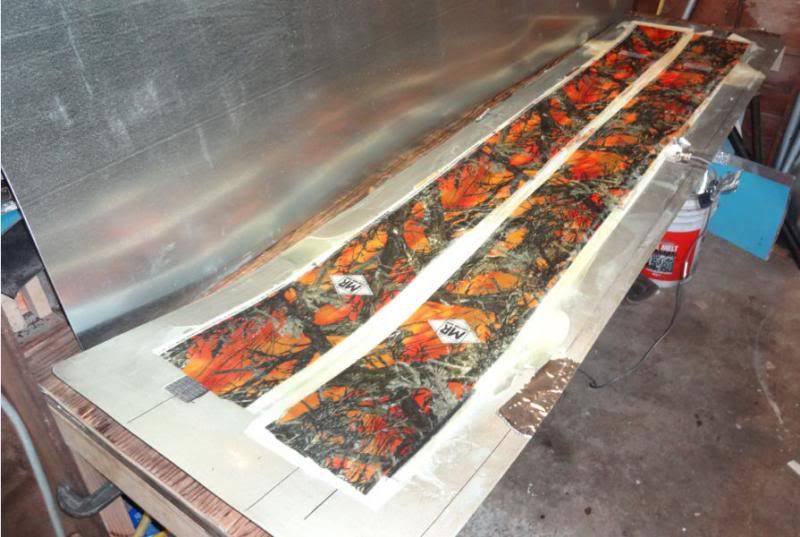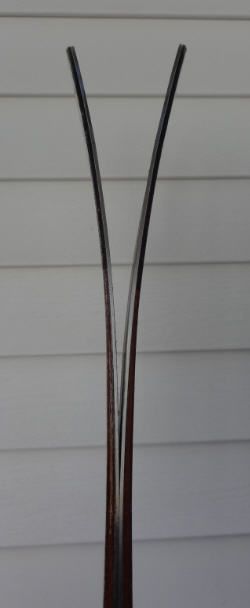Page 11 of 14
Posted: Fri Mar 14, 2014 11:34 pm
by MontuckyMadman
I dunno bonding issue with the stiffness of carbon and delams put the carbon towrss the core. Nor sure really. Contraction issue maybe.
Posted: Sat Mar 15, 2014 3:13 am
by vinman
I the carbon next to the core has to do with the way stress is applied to the laminate and how the different material behave.
I think. We really need twizz to explain this but it has to do with allowing the glass to do its job before the carbon begins to come into play as a reinforcement.
I know this answer sucks but it is all my little brain can recall at this time. Someplace buried in the forum there is a really old thread about this and how to best arrange the materials to get the most out of them.
That and my buddy from Burton says carbon next to the core.....
Posted: Sat Mar 15, 2014 3:58 am
by skidesmond
vinman wrote:I the carbon next to the core has to do with the way stress is applied to the laminate and how the different material behave.
I think. We really need twizz to explain this but it has to do with allowing the glass to do its job before the carbon begins to come into play as a reinforcement.
I know this answer sucks but it is all my little brain can recall at this time. Someplace buried in the forum there is a really old thread about this and how to best arrange the materials to get the most out of them.
That and my buddy from Burton says carbon next to the core.....
To add some more (murky) info to that... I came across some info on the web where a company was using CF between layers of a material similar to FG, but it wasn't FG. Someother kind of material used in the making of ropes. It wasn't nylon either. In their discover it kind of tempered the CF. Meaning it was less likely to snap or shatter and made it more flexible without snapping. Perhaps this is why the CF is better between the FG. Ok I just did a search on ropes and I think the material is called Dyneema which sounds like it's HMDPE
http://www.cncphotoalbum.com/rope/.
Posted: Sat Mar 15, 2014 7:48 am
by twizzstyle
I don't have any good explanation for either way unfortunately. I've done both. When I've been going for a stiffer ski, I've put the CF on the outside, when I've been going for a softer ski, I put it on the inside. I will say that when I've put the CF on the outside, I get much less fiber texture print-through in my topsheet.
Also if you're using unidirectional CF, it won't change your torsional stiffness much, if at all. If it seems like it is it's probably a placebo effect.
Posted: Sat Mar 15, 2014 3:37 pm
by MadRussian
twizzstyle wrote: I get much less fiber texture print-through in my topsheet.
this is reason I'm using CF on outside. Not only top basis also get less of 3x inprint
twizzstyle wrote: Also if you're using unidirectional CF, it won't change your torsional stiffness much, if at all. If it seems like it is it's probably a placebo effect.
overall skis with carbon fiber came out stiffer. torsional stiffness may be a little. Skis number two and number three have core further into the tips and I can't compare apples to apples. I need to build a simple clamping jig to test stiffness in both direction with torque wrench to have more scientific data lol
Next time I will add carbon fiber at 45° will see how this will work
Posted: Sat Mar 15, 2014 6:15 pm
by twizzstyle
Awesome, you're thinking along the right track! 45 deg CF will most definitely change your torsional stiffness! With just longitudinal unidirectional fibers, the torsional stiffness is just coming from the epoxy sheering between fibers. With fibers at 45 deg, they are taking the torsional load directly.
Posted: Sun Mar 16, 2014 10:43 am
by MadRussian
twizzstyle wrote:Awesome, you're thinking along the right track! 45 deg CF will most definitely change your torsional stiffness! With just longitudinal unidirectional fibers, the torsional stiffness is just coming from the epoxy sheering between fibers. With fibers at 45 deg, they are taking the torsional load directly.
this is how I want to do it. CF at 0° adding small strips at 45° without crossing over 0° layer. this way I don't have to be concerned about thickness of crossover spot

Posted: Sun Mar 16, 2014 11:43 am
by MadRussian
a few thoughts on subjects of pressure and temperature ramp-up.
I'm pressing at 65 PSI don't know if it's too much or too little. I think excessive pressure is no good. understandably every press is different and possible 65 PSI can produce same results as 45 PSI in different press.
Question: is there any telltale signs of too much or too little pressure?
Pressure ramp-up.
I done both ways slow ramp-up and fast ramp up. I can't see any difference.
Pressure and temperature ramp-up.
first Entropy do not recommend slow temperature ramp-up.
I done:
1. two steps pressure ramp-up 40 PSI and 65 PSI with full heat right away at 65.
2. slope pressure ramp-up (don't remember steps can find my records right now) and two steps heat ramp-up 115°f for little bit and than full heat 180°f
3. full pressure right away 65 psi once it's reached full heat 180°f
All 3 looks the same to me.
question:
what's the right way to doing it? Is there such thing "right way"?
is there any way to tell from looking at the skis if ramp-up pressure/heat was done correctly?
For now I'm going to with full pressure than full heat root. IMO 15--20 min. while temperature ramping up enough time to epoxy get squeezed out before transition begins
next time, hopefully next week, will lower pressure to 45 PSI.
Good/bad idea?
Would love to hear opinion of experienced builders.
Posted: Tue Mar 18, 2014 12:10 pm
by Richuk
I don't want to leave you hanging man!
The CF idea needs more work. Tows spread over a larger area perhaps?
The rest we've discussed; running a few sample pressing will ensure you are able to define your own parameters.
The other issue you may want to consider is how you judge your rebate. If the fit is too precise, there is a chance core will jump the edge should the core expand laterally.
Posted: Tue Mar 18, 2014 12:48 pm
by twizzstyle
Yeah not having the 45 deg CF going full-span leaves something to be desired. Not nearly as effective when it's only 1/3 of the width.
Posted: Tue Mar 18, 2014 6:25 pm
by MadRussian
My reason behind doing CF this way that in the middle CF might get to thick in spots where all 3 directions crossing over.
this evening I did very "scientific" experiment ....trying to flex skis. Last pair even be so wide substantially stiffer and noticeably stiffer torsionaly compare to the first pair I built. So if I add 45° CF tow it might be too much.
I'll build next skis exactly same layup. Hopefully in time to try them this season. This will give me starting point for Cf in layup
Posted: Fri Mar 21, 2014 4:10 pm
by MadRussian
I build new pairs skis

hopefully I can take them out West someday
135-140-110-125-120 185cm R-18m 1950g each +- 5g. Same construction as a previous pair. Tip and tale rocker. While tip rocker about the same as a mold, tail rocker got shorter from 200 mm intended I got 150. camber 3--5mm from zero camber mold ...hmmmm go figure.
Finally got my logo straight


fresh out of the press.... I felt like kid on Christmas morning when opening the cassette

all cleaned up

tip rocker

tail rocker

very happy with results
Posted: Sat Mar 22, 2014 4:45 pm
by MadRussian
after a day skis stabilize, I suppose, camber now 1--2mm
Posted: Sun Mar 23, 2014 3:41 am
by skidesmond
That feeling never gets old! Been following your thread for along time. Great to see you making skis Lets us know how they perform..
Posted: Mon Mar 24, 2014 7:49 am
by rightsideways
nice looking topsheet! I really like the shape of your skis. You should have plenty of snow to try those out up north for months to come!




